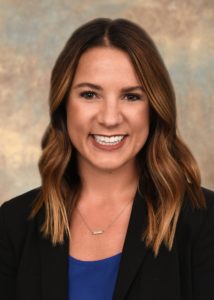- Calls to this hotline are currently being directed to Within Health or Eating Disorder Solutions
- Representatives are standing by 24/7 to help answer your questions
- All calls are confidential and HIPAA compliant
- There is no obligation or cost to call
- Eating Disorder Hope does not receive any commissions or fees dependent upon which provider you select
- Additional treatment providers are located on our directory or samhsa.gov
The Impact of Media, the Thin Ideal, and the Power of You

Contributed By: Allison Mecca, PsyD of Lindner Center of HOPE
We live in a world where we are constantly bombarded with the media. It doesn’t just come from the TV and magazines like in the “good old days,” we have unlimited access to the world at our fingertips through computers, phones, tablets, etc.
Further, the world of social media has taken over, and we have more control and access than ever before. At any given moment, we can be scrolling through our phones and exposed to a plethora of images and messages from celebrities to close friends and everyone in between.
When it comes to media messaging around beauty, fashion, and health, there is a disproportionate number of images that reinforce a thin ideal. That is, our media tends to be centered on thin images of women that send the message that a thin body is the most attractive and ideal body.
Call Lindner Center of HOPE for Help 855-728-4729
Thin ideal media also contains images and messages about weight loss, dieting, and fitness and sends the message that you need to do these things in order to be happy and successful. Studies indicate that exposure to thin ideal images in traditional and social media contribute to body dissatisfaction and suggest that the mass media is the most pervasive and powerful influence on the development of body dissatisfaction in women (Grabe, Ward, & Hyde, 2008; Tiggemann & Slater, 2013).
Given what we see in the media, it is not surprising, though disturbing, that the prevalence of body dissatisfaction in the United States has remained high for over 30 years, and it is now considered normal for girls and women to be dissatisfied with their bodies and have weight concerns.
What is even more noteworthy, research shows that body dissatisfaction is the biggest risk factor for the development of an eating disorder (Stice & Shaw, 2002). An eating disorder can be pervasive and life-threatening illness if not addressed and treated.
While treatment is available and recovery is possible for those actively struggling with an eating disorder, primary interventions, awareness, and education are key in the prevention of body dissatisfaction and eating disorders. We have the power when it comes to prevention. We need to be smart consumers and use the power of media for good to take a stand against these harmful media messages.
Thin Ideal Questions
According to the Center for Media Literacy, media literacy is the practice of being a critical consumer of the media, looking beyond what we first see and evaluating the message in front of us. When exposed to thin-ideal images or messages on either television or social media, try asking yourself the following:
- Who created this message, and why are they sending it?
- Who owns and profits from the message?
- What techniques are used to attract and hold my attention?
- What is omitted from this message?
- What message is this image trying to send?
- How does that message make me feel?
When it comes to social media, it is also important to acknowledge that impression management is an essential factor, meaning that people are motivated to share and portray themselves in a favorable light. That picture we see of Instagram is likely one of many shots carefully selected, then edited, and filtered before it shows up on our feed.
So the next time you are comparing yourself to the images you see, stop and question what and who you are really comparing yourself to and/or if this message was designed to benefit from your dissatisfaction. When we effectively recognize and analyze the media messages that influence us, we don’t let it consume or control us, we reinforce instead the message that the media’s definitions of beauty and success do not have to define our self-image and self-worth.
In addition to media literacy, we can use our media platforms to apply the dissonance theory and challenge the thin ideal messages. Dissonance theory postulates that having inconsistent beliefs and behaviors cause psychological discomfort, which then motivates people to change their beliefs and behaviors to be more aligned and consistent.
For example, if we are acting as if we are worthy despite our size by wearing our swimsuit proudly, then our belief system is going to want to shift to be consistent with our behaviors. Dissonance based interventions have been developed for eating disorder prevention and focus on having individuals actively challenge the thin ideal messages in our society in order to change their own self-image.
Given the research that supports the effectiveness of dissonance interventions in decreasing body dissatisfaction, Stice and his colleagues developed a program called The Body Project designed to be implemented on college campuses (Stice, Shaw, & Marti, 2000). However, you don’t need to participate in this program to practice challenging the media and your own beliefs.
When using social media, look for opportunities to publicly argue against the thin ideal. Share an unedited, unfiltered picture of yourself. Respectfully call out others who might be body shaming themselves or another person.

Unfollow accounts that are not in line with your true beliefs and values. Doing activities like these where you are taking an active stance against the thin ideal will challenge your own beliefs about your body and work to create a more harmonious relationship with yourself.
Living in a world full of screens, news outlets, endless social media sites, and around the clock media access can be overwhelming. It can be easy to internalize the narratives and messages that we are exposed to; however, it is also important to recognize that the media does not have to control how we live, how we feel about ourselves, or our self-worth.
We have the power to challenge thin ideal messages, filter out people and media that are not serving us, and create our own ideals and lives that celebrate our authentically beautiful human soul.
References
Grabe, S., Ward, M. L., & Hyde, J. S. (2008). The role of media in body concerns among women: A meta-analysis of experimental and correlational studies. Psychological Bulletin, 134, 460-476. doi: 10.1037/0033-2909.134.3.460
Tiggemann, M., & Slater, A. (2013). NetGirls: The Internet, Facebook, and body image concern in adolescent girls. International Journal of Eating Disorders, 46, 630-633. doi: 10.1002/eat.22141
Stice, E., & Shaw, H. E. (2002). Role of body dissatisfaction in the onset and maintenance of eating pathology. Journal of Psychosomatic Research, 53, 985-993. doi:10.1016/S0022-3999(02)00488-9
Stice, E., Shaw, H.E., & Marti, C. N. (2007). A meta-analytic review of eating disorder prevention programs: Encouraging findings. Annual Review of Clinical Psychology, 3, 233-257. doi:10.1146/annurev.clinpsy.3.022806.091447
Lindner Center of HOPE offers a disciplined approach to eating disorder treatment that combines psychiatric management, psychotherapy, nutritional services, and family engagement throughout the entire process. Board-certified clinicians offer the wisdom, compassion, and proven treatment modalities to successfully treat complex illnesses such as eating disorders, returning patients, and their loved ones, to more fulfilling lives.
The Harold C. Schott Foundation Eating Disorders Program at Lindner Center of HOPE includes services for adults and adolescents, females and males, while also incorporating research.

Within the Harold C. Schott Foundation Eating Disorders Program, Dr. Mecca serves primarily as an outpatient therapist. She also provides therapy in the adult PHP and IOP programs and provides consultations across programs and levels of care at the Lindner Center of HOPE. In addition to her role in the Eating Disorders Program, she is a member of the Dialectical Behavior Therapy (DBT) and Radically-Open Dialectical Behavior Therapy (RO-DBT) Teams and has a strong interest in the treatment of under-controlled and over-controlled maladaptive coping.
Prior to joining the Lindner Center of HOPE, Dr. Mecca worked at the Eating Recovery Center, where she provided individual, family, and group therapy within the PHP and IOP treatment programs. She also served as the clinical lead for the Mood and Anxiety Program and supported with program development and management.
Dr. Mecca works with older adolescents, young adults, and adults. She has worked in various settings, including university counseling centers and psychiatric hospitals. She has experience with mood and anxiety management, body image, self-harm, crisis intervention, and psychological assessment. Dr. Mecca utilizes mindfulness and acceptance-based behavioral therapies and has been extensively trained in DBT and RO-DBT and is a member of the Academy for Eating Disorders and the American Psychological Association.
The opinions and views of our guest contributors are shared to provide a broad perspective on eating disorders. These are not necessarily the views of Eating Disorder Hope, but an effort to offer a discussion of various issues by different concerned individuals.
We at Eating Disorder Hope understand that eating disorders result from a combination of environmental and genetic factors. If you or a loved one are suffering from an eating disorder, please know that there is hope for you, and seek immediate professional help.
Published July 7, 2020, on EatingDisorderHope.com
Reviewed & Approved on July 7, 2020, by Jacquelyn Ekern MS, LPC


